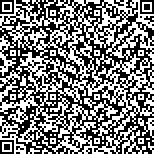|
|
| |
|
|
| 本文已被:浏览 1140次 下载 259次 |

码上扫一扫! |
| 小剂量低分子肝素钠联合糖皮质激素治疗儿童原发性肾病综合征临床疗效分析 |
| 黄茂,王俐,鲁志力,饶睿,李松,文耀平 |
|
|
| (四川省乐山市人民医院,四川乐山 614000) |
|
| 摘要: |
| 目的:探讨小剂量低分子肝素钠联合糖皮质激素治疗儿童原发性肾病综合征的可行性。方法:选择我院2011年1月至2014年1月接诊的原发性肾病综合征患儿110例,按随机数字表法分为观察组和对照组各55例。对照组进行常规激素治疗,口服醋酸泼尼松1郾5~2.0 mg/(kg·d),最大剂量不超过60.0 mg/d,连续服用4周,同时针对其他症状给予对症治疗;观察组在对照组的基础上给予皮下注射低分子肝素钠100 U/(kg·d),最大剂量不超过5 000 U/d,治疗4周。治疗前后检测实验室指标,包括部分活化凝血酶时间(APTT)、凝血酶原时间( PT)、D鄄二聚体( DD)、血浆纤维蛋白原( FB)、尿量、24 h尿蛋白(24 h Upro)、血清白蛋白(Alb)、肌酐(Scr)、总胆固醇(TC)、甘油三酯(TG)水平等,观察患儿症状改善情况,比较两组患儿临床疗效,记录不良反应发生情况。随访10个月,记录患儿的复发次数及治疗后3、6、9个月平均免疫球蛋白E(IgE)水平。结果:(1) 两组患儿治疗后FB水平、Alb水平、尿量较治疗前明显升高,差异有统计学意义(P<0.01),DD、24 h Upro、TC水平较治疗前明显降低,差异有统计学意义(P<0.01),且观察组治疗后FB水平、Alb水平、尿量明显高于对照组,差异有统计学意义(P<0.05),DD、24 h Upro、TC 水平明显低于对照组,差异有统计学意义(P<0.05)。(2)观察组临床总有效率为94.55%,对照组为80.00%,差异有统计学意义(χ2=12.952,P<0.05)。观察组出现1例皮下淤点和淤斑,1例鼻衄,对照组出现2例皮下淤点和淤斑,1例鼻衄,两组比较差异无统计学意义(P>0.05)。观察组患儿的疾病复发次数少于对照组,差异有统计学意义(P<0.05)。(3)治疗后3、6、9个月平均IgE水平,观察组低于对照组,差异有统计学意义(P<0.05)。结论:小剂量的低分子量肝素钠能够提高糖皮质激素治疗儿童原发肾病综合征的近期疗效,缓解患儿血液高凝状态,抑制肾脏微血栓的形成,改善肾脏微循环,减少蛋白尿排出量,延缓或阻止肾病发展进程,无明显不良反应,值得临床推广使用。 |
| 关键词: 儿童 原发性肾病综合征 低分子肝素钠 抗凝 |
| DOI:10.13407/j.cnki.jpp.1672-108X.2017.06.007 |
|
| 基金项目: |
|
| Low Molecular Weight Heparin Combined with Glucocorticoids in Children with Primary Nephrotic Syndrome |
| Huang Mao, Wang Li, Lu Zhili, Rao Rui, Li Song, Wen Yaoping |
| (Leshan People爷s Hospital of Sichuan Province, Sichuan Leshan 614000, China) |
| Abstract: |
| Objective: To investigate the fesibility of low molecular weight heparin combined with glucocorticoid therapy for children with primary nephrotic syndrome. Methods: A tatol of 110 children with primary nephrotic syndrome from January 2011 to January 2014 in our hospital were selected as the observed object, all children were randomly divided into observation group and control group, 55 cases in each group. The control group received prednisone 1.5 to 2.0 mg/(kg·d) and symptomatic treatment for 4 weeks, within a maximum of 60.0 mg/d, the observation group received low molecular weight heparin 100 U/(kg·d) on the basis of the control group within a maximum of 5,000 U/d. The symptoms were observed before and after treatment, and laboratory indexes were detected, including APTT, PT, DD, FB, FB, urine volume, 24 h Upro, Alb, Scr, TC, TG, et al, the clinical efficacy were evaluated, adverse events were recorded. Follow up for 10 months, recorded the number of children with recurring and the average immunoglobulin E (IgE) level after treatment for 3, 6, 9 months. Results: The FB, urine volume, Alb of the two groups after treatment were significantly higher than those before treatment (all P<0.05), the DD, 24 h Upro, TC were significantly lower than those before treatment (all P<0.05). The FB, Urine, Alb of the observation group after treatment were significantly higher than those in the control group (all P<0.05), the DD, 24 h Upro, TC were significantly lower than those in the control group (all P<0.05). The total effective rate of the observation group was 94.55%, the control group was 80.00%, the difference was statistically significant (χ2=12.952, P<0.05). There were 1 case of children with subcutaneous petechiae and ecchymosis, 1 case with nosebleed in observation group, and 2 case of children with subcutaneous petechiae and ecchymosis, 1 case with nosebleed in control group, there were no significant differences in adverse reactions (P>0.05). The number of disease recurrence in observation group were lower than control group, the difference was statistically significant (P<0.05). After 3, 6 and 9 months' treatment the average IgE levels of the observation group were lower than those of the control group, the differences were statistically significant (P<0.05). Conclusion: The small doses of low molecular weight heparin can improve short-term efficacy, remit the hypercoagulable state of children, inhibit the formation of renal microcirculation of blood clots, improve renal microcirculation, reduce proteinuria excretion, delay or prevent the development of kidney disease process, no significant side effect, it is worthy of clinical use in the treatment of children with primary nephrotic syndrome. |
| Key words: children primary nephrotic syndrome low molecular weight heparin anticoagulation |
|
|
|
|
|